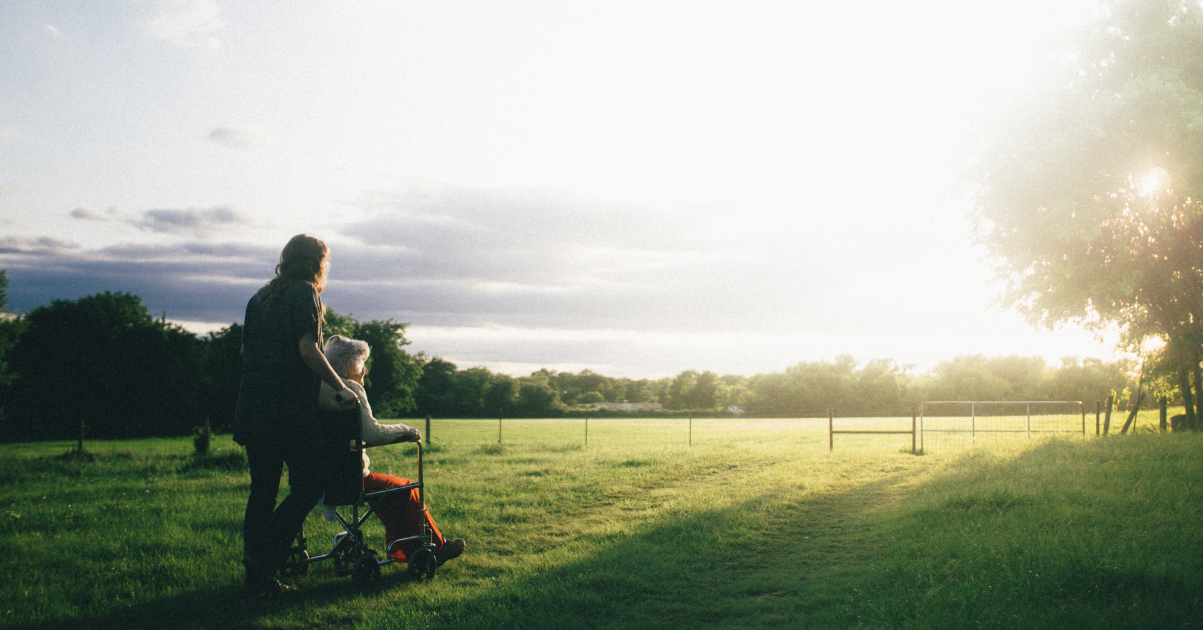
今日、多くの業界でコ・クリエーションが導入されています。そして遂に、ヘルスケア分野の製品、環境、サービスのデザインにも影響を与え始めるようになりました。この事実は、「へルスケアプロジェクトから優れたデザインが生み出されれば多くの人の生活の質を向上させる可能性がある」という点で重要なトレンドといえます。プロセスにコ・クリエーションが導入される時期が早ければ早いほど、製品、環境、サービスのデザインと開発に与える影響は大きくなります。
ヘルスケアプロジェクトにコ・クリエーションを導入するメリットとは?
ヘルスケアプロジェクトは複雑で、さまざまな関係者が関与します。ヘルスケアプロジェクトにコ・クリエーションを導入するには多くの時間とリソースが必要になりますが、最終的にもたらされるメリットは計り知れません。デザインのフロントエンドにコ・クリエーションを導入すれば、ヘルスケアプロジェクトの最終結果に次の3つのメリットがもたらされます。一つ目は、関係者をコ・クリエーターとしてプロセスに参加させることで、彼らのニーズを満たす最終結果が得られる可能性が飛躍的に高まります。二つ目は、関係者がコ・クリエーターとして積極的にプロセスに参加し、何らかの役割を果たすことで、デザイン過程に主体的に関われるようになります。当事者感覚は自信につながり、関係者の仕事の仕方に良い影響を与えます。三つ目は、ソリューションに対し当事者感覚があれば移行期間が過ごしやすくなります。ここで言う移行期間とは、新しい製品、環境、サービスの扱いに慣れるまでの期間のことです。
ヘルスケアデザインのフロントエンドにおけるコ・クリエーション:ショート・ケーススタディ
通常、新しい病室をデザインする際には患者、患者の家族、看護師のニーズを考慮しなくてはなりません。しかし、医師、画像検査技師、付添人、栄養士、清掃作業員、修繕業者など、病室で働く人はほかにも大勢います。私は現在、オハイオ州立大学の研究者たちと共にコ・クリエーション・プロジェクトで働いて、病室で働く人や過ごす人、全員のニーズを調査しています。プロセスに参加する関係者は背景の異なる23ものグループから募っています!このプロジェクトは、デザインプロセスのフロントエンドにおける究極のコ・クリエーション事例です。
現在プロジェクトはコ・クリエーションの段階にあり、関係者の小グループに参加してもらい、理想的な病室を作っています。参加者には病室に設置するすべての設備の模型を与え、設置場所を決めてもらいます。部屋の設備模型はすべて実物大です。壁面はすべてマジックテープで覆われているので、関係者は設備模型(コンセント、棚、照明スイッチ、TVなど)を正確な場所にくっ付けることができます。バスルームは部屋のどこにでも移動できます。壁、シンク、トイレのすべてにキャスターが付いているからです。現在は、30回におよぶ実物大の模型を使ったコ・クリエーション・ワークショップの結果を分析し、病室で働き、療養し、訪問するすべての人たちのニーズを満たす、病室デザインのガイドラインを作成しています。
フロントエンドへのコ・クリエーション導入計画で考えるべきこととは?
デザインプロセスのフロントエンドへのコ・クリエーション導入計画段階で、組織のトップレベルの人材を巻き込むことができればベストです。組織のあらゆるレベルそしてポジションにある関係者と協力することが望ましいからです。また、プロセスの初めから終わりまで参加できる専門のコ・デザイナー・グループも必要です。コ・デザイナーとして参加したいという意欲のある人たちがいればベストですね。興味のない人やプロセスに疑問を抱いている人にコ・クリエーション・プロセスへの参加を強制してはいけません。
ヘルスケアプロジェクトのフロントエンドへのコ・クリエーション導入は繰り返し行われるプロセスです。コ・クリエーションのベストな形を探り出すには、多くの時間と試行錯誤が必要です。プロセスを可視化して、コ・クリエーター全員が自分たちが一緒に成し遂げたことを見えるようにすることが重要です。また、コ・クリエーションの取り組みを組織内の関係者全員に知らせることも重要です。プロセスを共有することで、さらなる関係者を発掘し、コ・クリエーション・ワークショップに参加してもらうのです。関係者全員にコ・クリエーターとしてプロセスに参加してもらうには、先進的な通信テクノロジーやソーシャル・ネットワーキングが役立つでしょう。
コ・クリエーションの未来とは?
今後も、ヘルスケアデザインにおけるコ・クリエーションの取り組みは増え続けていくでしょう。事実、Philips社は最近、オランダのアイントホーフェンに初の「HealthSuite Labs Co-creation Center」を開設したと発表しました。Philips社のプレスリリースによると、同センターは、「ヘルスケア専門家や一般開業医が、患者やさまざまな業界のビジネス専門家とチームを組んで、コ・クリエーションを通じて総合的なヘルスケア・ソリューションを構築すること」を目的としています。Philips社は今後も、アメリカやアジアを含む全世界にコ・クリエーション・センターをオープンしていく予定です。
Co-creation is in use across many different industries today and it has finally started to impact the design of healthcare products, environments and services. This is an important trend since good design in healthcare projects has the potential to improve the quality of life for many people. The earlier in the process that co-creation is applied, the more impact it can have on the design and development of products, environments and services.
What are the merits of using co-creation on healthcare projects?
Healthcare projects are complex and many different stakeholders can be involved. Co-creation in healthcare projects takes a lot of time and resources but the payoff at the end can be enormous. The use of co-creation in the front end of design can improve the end results of healthcare projects in three ways. First, by involving the stakeholders as co-creators in the process, there is a far better chance that the end results will meet their needs. Second, when the stakeholders are actively involved as co-creators they will have ownership of what is designed since they will have played a role in the process. Feelings of ownership can lead to feelings of empowerment that will have a positive impact on how the stakeholders do their jobs. Third, when people have ownership of the solution it is easier for them during the transition period, i.e., the time period during which people learn how to use the new product, environment or service.
A short case study of co-creation in the front end of healthcare design
The design of new hospital rooms typically takes into account the needs of patients, family members and nurses. But there are many other people who work in the hospital room such as doctors, imaging technologists, sitters, dieticians, cleaners, repair people, and many more. I am working on a co-creation project now with other researchers at The Ohio State University where we are investigating the needs of all the people who work in and/or stay in the hospital room. We have invited people from 23 different stakeholder groups to participate in the process! This is an example of extreme co-creation in the front end of the design process.
We are now in a co-creation phase where we invite small groups of stakeholders to work together to create their ideal hospital room. We provide them with all the components that go into the patient room and let them decide where things should go. Everything in the room is full size. The walls are all covered with Velcro so that the stakeholders can stick components (such as outlets, shelves, light switches, TV, etc.) exactly where they want them to go. The bathroom can be moved to any place in the room since the walls, the sink and the toilet are all on wheels. We are now in the process of analysing the results of 30 full-scale, co-creation workshops to develop guidelines for the design of hospital rooms that will meet the needs of all the people who work, heal, and/or visit in these rooms.
What are things to think about when planning to use co-creation in the front end?
When planning to use co-creation in the front end of the design process it is best to have buy-in at the top level of the organization since you will want to collaborate with stakeholders from all levels and positions in the organization. You will need a group of dedicated co-designers who are able to stay involved in the process over time. It is best to work with people who are eager to be involved as co-designers. Coercing people to take part in a co-creation process when they are not interested in doing so or when they are skeptical about the process should be avoided.
Using co-creation in the front end of healthcare projects will be an iterative process. It will take time and many trials to figure out how best to make it work. It is important to visualize the process so that all the co-creators can see what they have accomplished together. It is also important that the co-creation effort be communicated to all interested parties in the organization. By sharing the process you can identify additional stakeholders to bring into the co-creation workshops. Advanced communication technologies and social networking can help to keep all interested stakeholders involved in the process as co-creators.
What can we expect in the future?
We can expect to see more co-creation efforts emerging in healthcare design in the future. In fact, Philips recently announced that it has opened its first "HealthSuite Labs Co-creation Center" in Eindhoven, the Netherlands. According to the company, the centers will "allow healthcare experts and general practitioners to work together in teams, with patients as well as business experts from multiple fields, to co-create and implement integrated care solutions" (from the press release). Philips plans to open more co-creation centers around the world, including some in the US and Asia.
.png?width=160&height=100&name=Top_logo%20(3).png)






